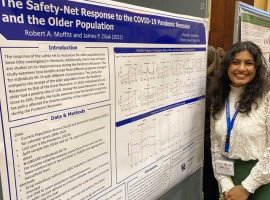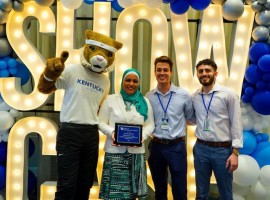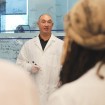Mapping Interactions Among Nutrients, Exposures and Diabetes
Nika Larian, a PhD student in Lisa Cassis’s lab at the UK Superfund Research Center, is studying the aryl hydrocarbon receptor, or AHR, a transcription factor with roles in drug metabolism and detoxification. She explains that if you knock out AHR in the fat tissue of mice, you can prevent the development of PCB-induced diabetes.
“I’m investigating natural components of the microbiome that are influenced by a high-fat diet, and may also be altered by exposure to PCBs. The microbiome is influenced by what we eat, including the consumption of a high-fat diet. So, at the cellular level, I can investigate all of these nutritional compounds that I’m interested in,” Larian says, “If I find an effect, I can then take this to my animal model, introduce it into a diet, challenge the mice with a high-fat diet, and see if I can alter the development of obesity and diabetes.”
PCBs and other environmental contaminants are lipophilic, meaning they accumulate in our fat tissue. When we lose weight, these toxins enter into our bloodstream, where they can promote the development of diabetes. “These studies might provide nutritional interventions for individuals exposed to environmental contaminants, as well as offer strategies for ameliorating the effects we see when these toxins are liberated from adipose tissue upon weight loss."
See all of the research under way at the UK Superfund Research Center by visiting their site: http://www.uky.edu/superfund.





